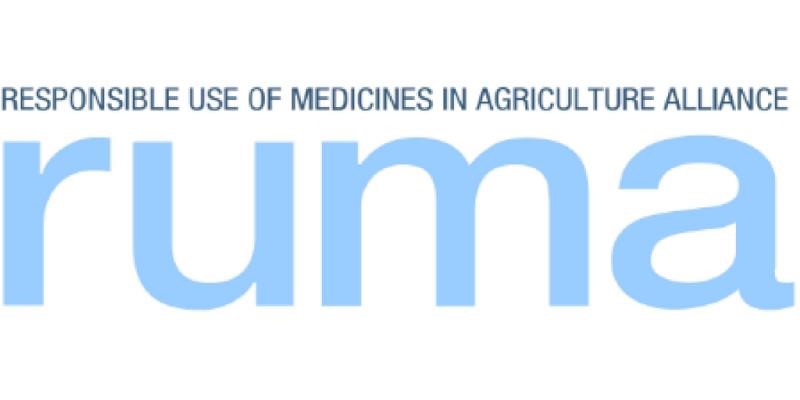RUMA (Responsible Use of Medicines in Agriculture) has published its ‘Targets Task Force Report 2020’, which builds on the successful implementation of the last targets released in 2017. Those figures show a 50% reduction in the use of antibiotics in farm animals since 2014 – the 5th lowest usage in Europe.
The new report, launched alongside the Veterinary Medicine Directorate’s (VMD) release of antibiotic sales data for 2019, covers 10 sectors including pigs, poultry and ruminants.
The report highlights antibiotic sales and use in the UK including:
- UK sales of antibiotics to treat food producing animals have halved since 2014¹
- The UK retains a position of fifth-lowest sales of antibiotics for food producing animals in Europe, the lowest among more commercially productive European countries²
- Highest Priority Critically Important Antibiotic (HP-CIA) sales for UK food producing animals have also fallen 75% since 2014, and sales of colistin are virtually nil¹
- Less than 30% of the UK’s antibiotics are used to treat disease in food producing animals³, despite over a billion farm animals being reared and managed in the UK every year
- Levels of antibiotic resistance found through Government monitoring and surveillance are also stabilising and falling in response to reductions in use¹
- Achieving the 2017-2020 targets:
- A key factor in these reductions has been the work of RUMA’s Targets Task Force (TTF) which – in 2017 – identified 40 sector-specific targets for responsible stewardship of antibiotics to be achieved across nine different livestock sectors by 2020
- Over three-quarters of the targets have been or are on track to be achieved by the end of 2020, a significant achievement considering lack of data and baseline information at the start of the process
NFU chief animal health and welfare adviser, Cat McLaughlin, who is also the chair of RUMA, said:
“The UK farming industry has responded extremely well to the targets. Our original aim of lowering overall antibiotic use, and in particular highest-priority critically important antibiotics (HP-CIAs), has been categorically achieved in the face of some challenging external conditions.
“Most sectors are now capturing data on antibiotic use across 90% or more of their sector which has been a key part of the success.
“Even where usage data is lacking but good sales data are available, for example in cattle and sheep, sizable reductions have been achieved especially in sales of HP-CIAs.”
However, Ms McLaughlin said that the overall picture in terms of use in the large and diverse cattle and sheep sectors is still lacking, which is why targets for 2024 include the collection of data into the new AHDB Medicine Hub, a UK centralised database for ruminants.
New targets across the ruminant sectors include a focus on disease prevention and herd and flock health planning, with plans to develop a new network of ‘Farm Vet Champions’. Specific reduction goals have not been set for beef and sheep, although there is an aim that dairy and calf rearing will secure reductions in use of 15% and 25% respectively across the national herd by 2024 as data become available.
Other sectors aiming to achieve reductions in antibiotic use as a result of farm-level interventions include the pig sector, with plans to decrease by a further 30% by 2024, and gamebirds with a goal to cut back by 40%.
Among other activities, the pig sector is promoting best-practice guidelines to reduce post-weaning diarrhoea, a common cause of antibiotic use, and will be identifying and supporting reductions among any farmers using higher levels of antibiotics within the sector. Gamebird farmers and vets will be focusing on improved practices, research into disease and farm assurance.
The poultry meat sector achieved significant reductions in recent years and join laying hens in opting to hold their targets at current levels.
Preventative use has been phased out completely in these sectors, meaning many animals receive no antibiotic treatments at all in their lifetime.
However, the sectors also face new challenges due to changing production systems, disease threat or warming climate, and will be focusing on managing these effectively through increased vaccine development and availability, surveillance and improved management practices.
Meanwhile, the VMD’s Veterinary Antimicrobial Resistance and Sales Surveillance (UK-VARSS 2019) report, also released today, shows that UK antibiotic sales for food-producing animals have halved since 2014 (when sales were recorded at 62 mg/kg).
Notes:
- Veterinary Medicines Directorate (2019). Veterinary Antimicrobial Resistance and Sales Surveillance 2019
- European Medicines Agency (2020). Sales of veterinary antimicrobial agents in 31 European countries in 2018: Trends 2010-2018
- HM Government (2019). UK One Health Report: antibiotic use and antibiotic resistance in animals and humans 2013-2017.
More from NFUonline:

